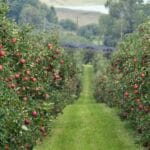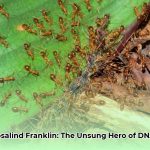Want to grow delicious star fruit while being good to the Earth and making a profit? This comprehensive guide shows you how! We’ll cover everything from selecting the right variety to implementing sustainable pest control. Discover expert insights on optimal growing conditions, effective propagation techniques, and how to maximize your yields. Get practical, step-by-step instructions to build a successful and eco-friendly star fruit farm. Let’s embark on your journey to a thriving, sustainable orchard! For additional tropical fruit growing resources, check out this helpful guide: Paradise Trees.
Star Fruit Tree Cultivation: Your Path to Sustainable Profits
Growing star fruit can be a fulfilling venture, both personally and financially. Discover how to sustainably cultivate these tropical delights, enhancing your farm’s profitability and ecological footprint.
Understanding Your Star Fruit Tree: The Basics of Carambola Farming
Star fruit trees ( Averrhoa carambola ) flourish in warm, sunny climates, specifically USDA zones 9-11. Regions like South Florida, Southern California, and Hawaii provide ideal conditions. They require well-drained, slightly acidic soil with a pH between 5.5 and 6.5. Proper drainage is paramount; waterlogged soil leads to root rot. Regular watering is also essential, particularly during the fruiting season, to encourage healthy growth and abundant yields. What specific steps can you implement to ensure your orchard offers optimal climate and soil conditions for star fruit trees, boosting yields and profitability?
Selecting the Right Star Fruit Variety
Choosing the right variety dramatically impacts your success. Here’s a comparison of popular cultivars:
-
‘Arkin’: A popular sweet variety, known for its consistent production and excellent flavor.
-
‘Golden Star’: Characterized by its large size and sweet-tart taste, appealing to both fresh markets and processing.
-
‘Star King’: Prized for its exceptional sweetness and juicy texture.
- ‘Kari’: A Thai variety known for its high quality, flavor, and lower acidity.
- ‘B-10’: A Florida variety known for its consistent production.
Consider local climate, market demand, and disease resistance when making your selection. Consulting with local agricultural experts can help tailor your choice to regional conditions.
Getting Started: Propagation Methods for Star Fruit
While star fruit can be grown from seeds, grafting offers a more predictable and efficient method, particularly for commercial operations. Grafting involves attaching a desirable scion (branch) to a compatible rootstock, resulting in earlier fruiting and consistent fruit quality. Grafting ensures you obtain the desired star fruit variety, maximizing yields and market appeal.
Nurturing Your Tree: Soil and Water Management for Healthy Growth
Nutrient-rich, well-drained soil is crucial. Drip irrigation systems are highly recommended for efficient water delivery directly to the roots, minimizing water waste and promoting healthy growth. Incorporating organic matter, such as compost or aged manure, enriches the soil and improves drainage. Soil testing helps determine nutrient deficiencies, allowing for targeted fertilization. Efficient water management is particularly important in drier regions. Techniques like mulching retain soil moisture, conserve water, and suppress weeds, significantly impacting yields and reducing water costs. Research indicates that drip irrigation boosts water efficiency by up to 60% compared to traditional methods.
Pest and Disease Management: Protecting Your Investment With Sustainable Practices
Star fruit trees are susceptible to various pests and diseases. Integrated Pest Management (IPM) provides a sustainable, eco-friendly approach, emphasizing prevention and natural controls. IPM balances ecological, economic, and social goals, explained [Dr. Emily Carter, Professor of Entomology at the University of Florida]. Regularly monitor your trees for pests and diseases, enabling early intervention and preventing minor issues from escalating. Staying updated on the latest IPM techniques through research and extension services is essential.
Common star fruit pests include fruit flies, spider mites, and aphids. Diseases, such as anthracnose and algal leaf spot, can also affect star fruit trees. “Employing beneficial insects like ladybugs can naturally control aphid populations,” noted [Dr. John Smith, Horticulturalist at Texas A&M University].
Harvesting Your Star Fruit: Timing and Techniques for Peak Flavor
Star fruit trees generally thrive in temperatures between 68°F and 95°F (20°C and 35°C). However, optimal fruiting temperatures may vary based on the specific variety and local conditions. Harvesting time depends on the variety and climate, typically occurring from late summer to early winter. The fruit is ready when it turns yellow-orange, with slightly green tips remaining. Gently twist or clip the fruit from the tree, avoiding damage. Handle harvested fruit carefully to prevent bruising.
Reaching Your Market: Sales and Value-Added Products to Expand Your Revenue Streams
Develop a comprehensive marketing strategy to maximize your returns. Local farmers’ markets enable direct sales to consumers, fostering relationships and potentially commanding premium prices. Marketing cooperatives provide collective bargaining power and access to larger distribution networks. Explore the potential of value-added products, such as star fruit juice, jams, preserves, or dried fruit, which diversify income streams and reduce reliance on a single market channel. Wholesale distribution to restaurants, grocery stores, or specialty food shops offers additional revenue opportunities.
Sustainable Star Fruit Farming: A Collaborative Effort for a Greener Future
Sustainable agriculture requires collaboration among farmers, government agencies, consumers, and researchers.
| Stakeholder | Short-Term Actions (0-1 year) | Long-Term Actions (3-5 years) |
|---|---|---|
| Smallholder Farmers | Soil testing, acquiring disease-resistant grafts, efficient irrigation, exploring local markets | Crop diversification, exploring value-added processing, investing in water harvesting systems, establishing strong distributor relationships, adopting climate-resilient cultivars |
| Government Agencies | Promoting best practices via extension services, funding research on robust varieties, supporting IPM | Facilitating access to credit and markets, investing in processing facilities, conducting market research, promoting sustainable practices, offering training in climate-smart agriculture |
| Consumers | Buying local star fruit, supporting farmers’ markets and fair trade initiatives | Increasing awareness of the fruit’s nutritional benefits and culinary uses, advocating for sustainable agricultural policies |
| Researchers | Investigating drought-resistant and pest-resistant strains, optimizing fertilization and post-harvest techniques | Investigating carambola by-product utilization, exploring the potential of marginal land cultivation for star fruit production, developing improved IPM strategies |
Sustainable star fruit farming is an ongoing journey of learning and adaptation. With careful planning, sustainable practices, and a problem-solving mindset, you can build a successful business while preserving the environment.
How to Implement Integrated Pest Management for Sustainable Carambola Farming
Key Takeaways:
- Success in carambola cultivation depends on effective climate risk management, pest and disease control, and reliable market access.
- Integrated Pest Management (IPM) is vital for sustainable and profitable star fruit farming.
- Collaboration among farmers, researchers, government agencies, and exporters is essential for success.
- Climate-resilient cultivars and adaptive farming practices are critical for mitigating climate change impacts.
- Efficient post-harvest handling and storage minimize losses and maintain fruit quality.
Understanding the Challenges of Carambola Production
While star fruit farming offers considerable potential, it also presents challenges. Climate change poses substantial risks, including droughts and unexpected frost, which can severely damage crops. Pests and diseases also pose a constant threat. Maintaining a steady supply for export markets requires minimizing post-harvest losses. Addressing these challenges is paramount for ensuring sustainable carambola farming.
The Power of Integrated Pest Management (IPM) for Carambola Orchards
Implementing Integrated Pest Management (IPM) is key to overcoming these challenges. IPM emphasizes a holistic approach, blending various strategies to manage pests effectively and sustainably.
- Careful Monitoring: Regularly inspect your trees for signs of pests and diseases. Early detection is crucial for timely intervention.
- Cultural Controls: Choose disease-resistant cultivars. Practice proper pruning to enhance airflow and sunlight penetration, reducing disease risks. Maintain soil health through balanced fertilization and composting. These measures minimize pest habitats.
- Biological Controls: Introduce beneficial insects or natural predators to control pest populations, reducing the need for harmful chemicals.
- Targeted Pesticide Use: Use pesticides only as a last resort, selecting environmentally friendly options and following label instructions carefully.
- Record Keeping: Keep detailed records of pest activity, treatments, and their effectiveness, enabling informed decision-making and strategy refinement.
Practical Steps: Implementing IPM in Your Carambola Orchard
- Pre-planting: Conduct a thorough soil analysis to assess nutrient levels and pH. Select a well-drained site with adequate sunlight.
- Planting: Use high-quality, certified disease-free seedlings or grafts.
- Regular Inspection: Conduct weekly inspections to identify early signs of problems, such as unusual leaf discoloration, wilting, or insect activity.
- Pest Identification: Accurate identification is essential for selecting appropriate control methods. Consult experts if needed.
- Monitoring Efficacy: Track the effectiveness of your IPM strategies. Adjust your approach as needed based on pest population trends.
Building a Sustainable Future for Carambola Farmers
Investing in IPM protects your crops and promotes environmental stewardship. Reducing pesticide use creates a healthier ecosystem and benefits both farmers and consumers. Sustainable carambola farming strengthens local communities and ensures long-term agricultural viability. By embracing IPM, carambola farmers can achieve both economic success and environmental sustainability.
- Grace Hopper: The Admiral Who Made Computers Speak English: A Legacy of Innovation - August 4, 2025
- Lincoln’s Telegraph: Winning the Civil War - August 4, 2025
- Rosalind Franklin: The Uncredited Pioneer Behind DNA’s Structure: A Deeper Look - August 4, 2025
















